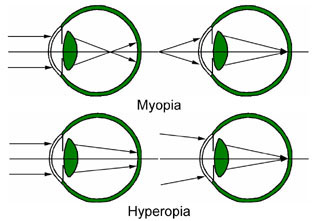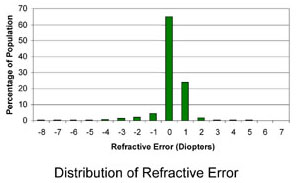Optipedia • SPIE Press books opened for your reference.
Emmetropia and Ametropia
Excerpt from Field Guide to Visual and Ophthalmic Optics
Emmetropia is a state of refraction where a point at an infinite distance from the eye is conjugate to the retina. Ametropia is a state where refractive error is present, or when distant points are no longer focused properly to the retina. Myopia or near-sightedness (short-sightedness) is one form of ametropia where the eye is effectively too long or has too high a power. Consequently, a point at infinity focuses in front of the retina. In myopia, a point lying between infinity and the eye is conjugate to the retina. Hyperopia or far-sightedness is a form of ametropia where the eye’s power is too weak or the eyeball too short. In this case, a point at infinity focuses behind the retina. A point behind the eye is therefore conjugate to the retina. Astigmatism is a form of ametropia in which refractive error changes with meridian.


J. Schwiegerling, Field Guide to Visual and Ophthalmic Optics, SPIE Press, Bellingham, WA (2004).
View SPIE terms of use.

